Blue Bird’s (NASDAQ:BLBD) Q4 Sales Beat Estimates

School bus company Blue Bird (NASDAQ:BLBD) reported Q4 CY2024 results exceeding the market’s revenue expectations , but sales fell by 1.2% year on year to $313.9 million. On the other hand, the company’s full-year revenue guidance of $1.45 billion at the midpoint came in 0.6% below analysts’ estimates. Its non-GAAP profit of $0.92 per share was 13.5% above analysts’ consensus estimates.
Is now the time to buy Blue Bird? Find out in our full research report .
Blue Bird (BLBD) Q4 CY2024 Highlights:
“I am incredibly proud of our team’s achievements in delivering another outstanding result and near record profit in the first quarter,” said Phil Horlock, President & CEO of Blue Bird Corporation.
Company Overview
With around a century of experience, Blue Bird (NASDAQ:BLBD) is a manufacturer of school buses and complementary parts.
Heavy Transportation Equipment
Heavy transportation equipment companies are investing in automated vehicles that increase efficiencies and connected machinery that collects actionable data. Some are also developing electric vehicles and mobility solutions to address customers’ concerns about carbon emissions, creating new sales opportunities. Additionally, they are increasingly offering automated equipment that increases efficiencies and connected machinery that collects actionable data. On the other hand, heavy transportation equipment companies are at the whim of economic cycles. Interest rates, for example, can greatly impact the construction and transport volumes that drive demand for these companies’ offerings.
Sales Growth
A company’s long-term performance is an indicator of its overall quality. While any business can experience short-term success, top-performing ones enjoy sustained growth for years. Regrettably, Blue Bird’s sales grew at a tepid 5.7% compounded annual growth rate over the last five years. This fell short of our benchmark for the industrials sector, but there are still things to like about Blue Bird.
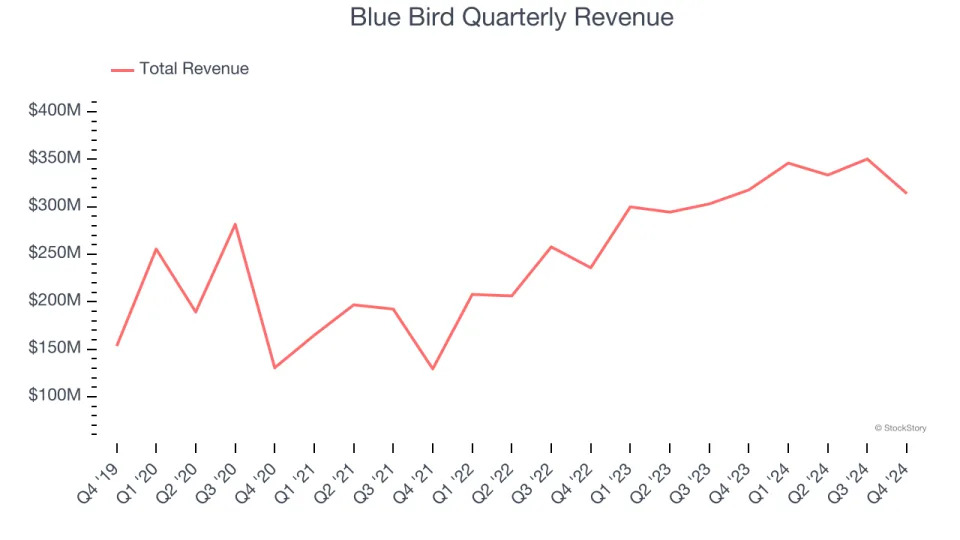
We at StockStory place the most emphasis on long-term growth, but within industrials, a half-decade historical view may miss cycles, industry trends, or a company capitalizing on catalysts such as a new contract win or a successful product line. Blue Bird’s annualized revenue growth of 21.7% over the last two years is above its five-year trend, suggesting its demand recently accelerated.
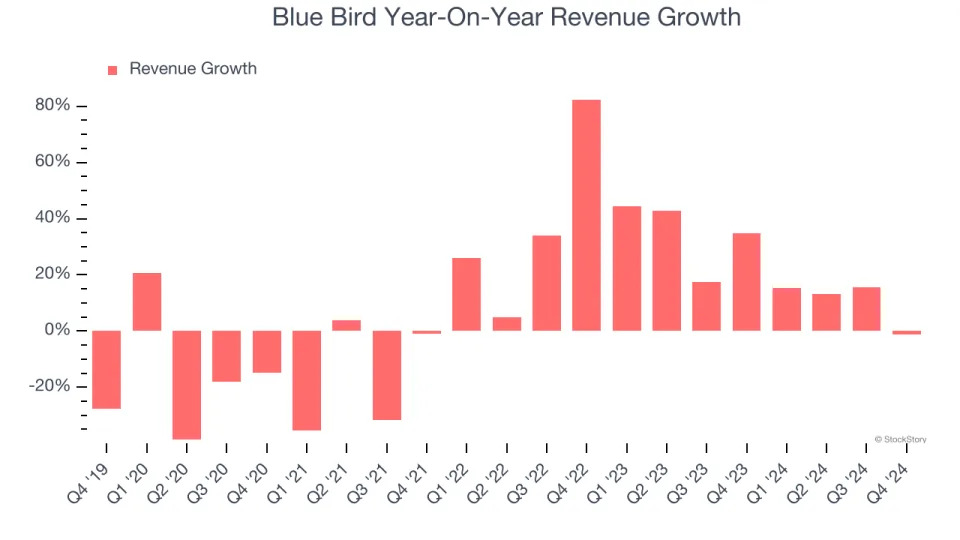
Blue Bird also reports its units sold, which reached 2,130 in the latest quarter. Over the last two years, Blue Bird’s units sold averaged 9% year-on-year growth. Because this number is lower than its revenue growth, we can see the company benefited from price increases.
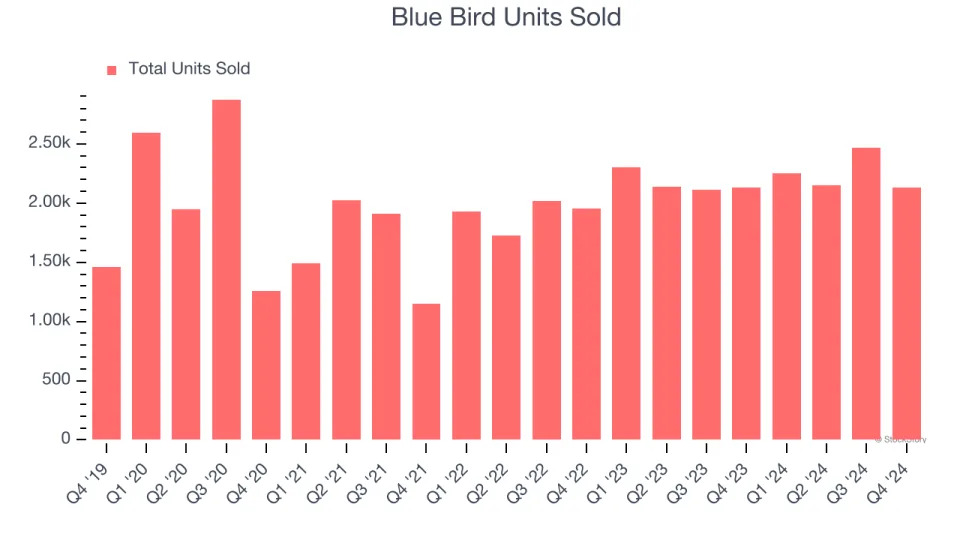
This quarter, Blue Bird’s revenue fell by 1.2% year on year to $313.9 million but beat Wall Street’s estimates by 1.3%.
Looking ahead, sell-side analysts expect revenue to grow 10.3% over the next 12 months, a deceleration versus the last two years. Still, this projection is admirable and suggests the market is baking in success for its products and services.
Unless you’ve been living under a rock, it should be obvious by now that generative AI is going to have a huge impact on how large corporations do business. While Nvidia and AMD are trading close to all-time highs, we prefer a lesser-known (but still profitable) stock benefiting from the rise of AI. .
Operating Margin
Operating margin is one of the best measures of profitability because it tells us how much money a company takes home after procuring and manufacturing its products, marketing and selling those products, and most importantly, keeping them relevant through research and development.
Blue Bird was profitable over the last five years but held back by its large cost base. Its average operating margin of 4.2% was weak for an industrials business. This result isn’t too surprising given its low gross margin as a starting point.
On the plus side, Blue Bird’s operating margin rose by 7.6 percentage points over the last five years.
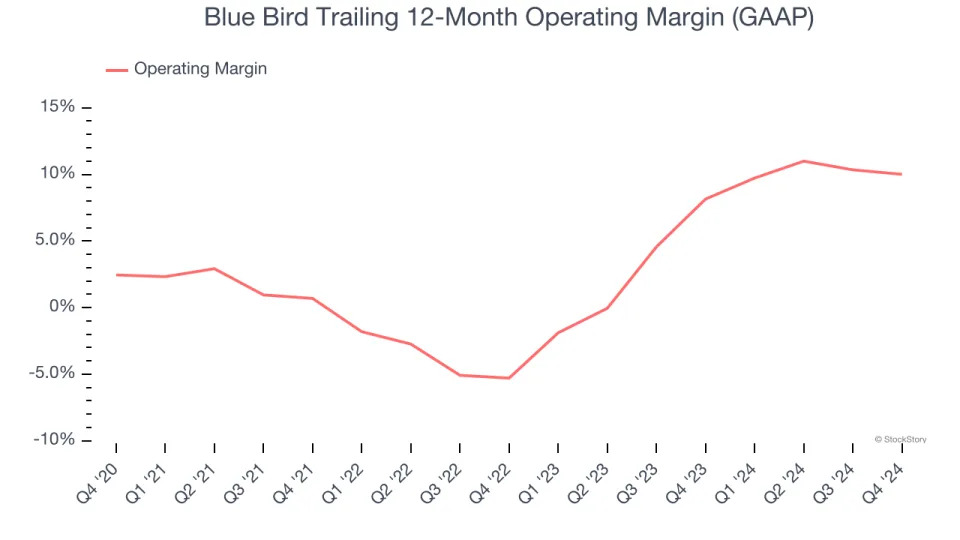
This quarter, Blue Bird generated an operating profit margin of 10.5%, down 1.4 percentage points year on year. Since Blue Bird’s operating margin decreased more than its gross margin, we can assume it was recently less efficient because expenses such as marketing, R&D, and administrative overhead increased.
Earnings Per Share
Revenue trends explain a company’s historical growth, but the long-term change in earnings per share (EPS) points to the profitability of that growth – for example, a company could inflate its sales through excessive spending on advertising and promotions.
Blue Bird’s EPS grew at a spectacular 16.1% compounded annual growth rate over the last five years, higher than its 5.7% annualized revenue growth. This tells us the company became more profitable on a per-share basis as it expanded.
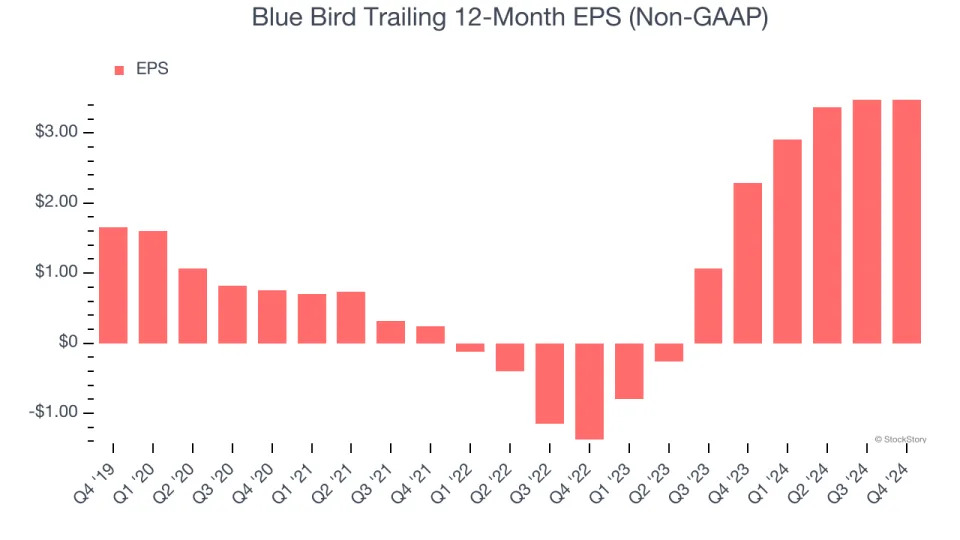
We can take a deeper look into Blue Bird’s earnings to better understand the drivers of its performance. As we mentioned earlier, Blue Bird’s operating margin declined this quarter but expanded by 7.6 percentage points over the last five years. This was the most relevant factor (aside from the revenue impact) behind its higher earnings; taxes and interest expenses can also affect EPS but don’t tell us as much about a company’s fundamentals.
Like with revenue, we analyze EPS over a shorter period to see if we are missing a change in the business.
For Blue Bird, its two-year annual EPS growth of 113% was higher than its five-year trend. We love it when earnings growth accelerates, especially when it accelerates off an already high base.
In Q4, Blue Bird reported EPS at $0.92, in line with the same quarter last year. This print easily cleared analysts’ estimates, and shareholders should be content with the results. Over the next 12 months, Wall Street expects Blue Bird’s full-year EPS of $3.48 to grow 18.7%.
Key Takeaways from Blue Bird’s Q4 Results
We were impressed by how significantly Blue Bird blew past analysts’ sales volume expectations this quarter, which drove its revenue and EBITDA beats. On the other hand, its full-year revenue guidance slightly missed. Overall, we think this was a solid quarter with some key areas of upside. However, the market seemed to focus on the negatives, and the stock traded down 2.1% to $35 immediately after reporting.
Big picture, is Blue Bird a buy here and now? When making that decision, it’s important to consider its valuation, business qualities, as well as what has happened in the latest quarter. We cover that in our actionable full research report which you can read here, it’s free .

